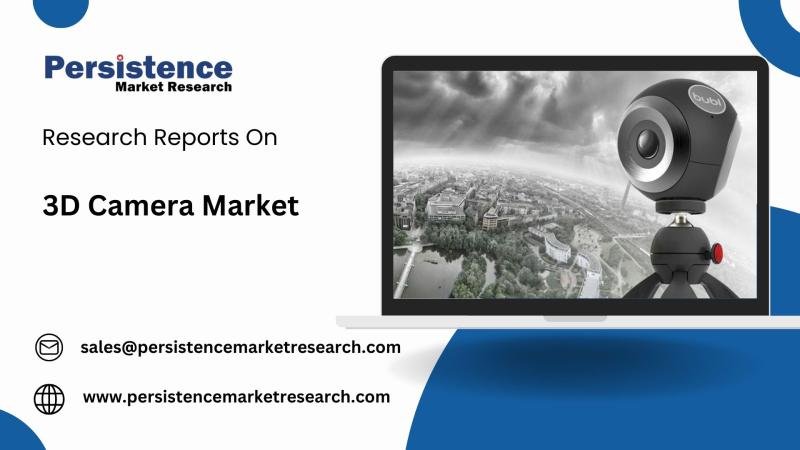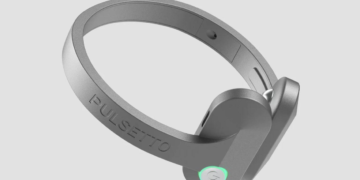The global 3D camera market is witnessing an unprecedented surge, transforming how industries capture, process, and visualize images. Valued at US$ 21.0 billion in 2023, the market is projected to reach a staggering US$ 140.3 billion by 2030, growing at an exceptional CAGR of 30.1% during the forecast period. This exponential growth is primarily driven by the rising integration of 3D imaging in smartphones, virtual reality (VR), autonomous vehicles, and industrial robotics.
3D cameras provide depth perception and high-precision imagery, enabling realistic visualization across applications like gaming, filmmaking, healthcare imaging, and security surveillance. The stereo vision segment currently leads the market, owing to its cost-effectiveness and compatibility with consumer electronics. Regionally, North America dominates due to high adoption in entertainment, healthcare, and defense industries, while Asia-Pacific is emerging as the fastest-growing market fueled by smartphone penetration and manufacturing expansion.
Elevate your business strategy with comprehensive market data. Request a sample report now: https://www.persistencemarketresearch.com/samples/33679
Key Highlights from the Report
The global 3D camera market is forecasted to grow at a CAGR of 30.1% (2023-2030).
Smartphone integration continues to drive mass-market adoption of 3D sensing technology.
Stereo vision technology holds the largest market share due to affordability and versatility.
Asia-Pacific is expected to witness the fastest growth, driven by consumer electronics production.
Rapid expansion of augmented and virtual reality (AR/VR) is fueling demand for advanced depth-sensing cameras.
Continuous innovation in time-of-flight (ToF) and structured light technologies enhances accuracy and range.
Market Segmentation
The 3D camera market segmentation can be broadly classified based on technology, application, and end-user industry. By technology, the market includes stereo vision, structured light, and time-of-flight (ToF). Stereo vision dominates the segment due to its adaptability in smartphones and consumer devices. However, ToF cameras are gaining traction in autonomous vehicles and industrial automation, where depth precision and real-time processing are critical.
Based on application, the market serves a diverse range, including gaming, photography, healthcare, automotive, industrial robotics, and security & surveillance. Among these, the consumer electronics segment holds the largest share, driven by smartphone manufacturers integrating 3D sensors for facial recognition, AR imaging, and gesture control. In contrast, the automotive sector is experiencing rapid adoption for driver assistance and navigation systems.
Regional Insights
North America leads the global 3D camera market, supported by strong technological infrastructure, major camera manufacturers, and early adoption of AR/VR technologies. The U.S. remains at the forefront, leveraging 3D imaging in cinematography, gaming, and medical diagnostics, alongside significant investments in research and development.
Meanwhile, Asia-Pacific is emerging as a high-growth region, led by countries such as China, Japan, and South Korea. The proliferation of smartphones, growing robotics manufacturing, and expanding consumer base are driving robust demand. Additionally, increasing government investments in smart city projects and automotive innovation are further propelling regional growth.
Read More: https://www.persistencemarketresearch.com/market-research/3d-camera-market.asp
Market Drivers
The foremost driver propelling the 3D camera market is the rapid integration of depth-sensing technologies in smartphones and consumer electronics. Major brands such as Apple, Samsung, and Xiaomi are embedding 3D sensing modules for facial recognition and AR features, enhancing user experiences.
Another critical driver is the rising demand for immersive visual experiences in gaming and entertainment. 3D cameras are now central to VR headsets and movie production, offering unparalleled realism and interactivity. Moreover, industries such as construction, healthcare, and automotive are adopting 3D imaging for modeling, diagnostics, and machine vision.
Market Restraints
Despite remarkable progress, the market faces certain technical and financial barriers. High manufacturing costs of 3D cameras, especially those using advanced ToF or structured light technology, limit adoption in low-cost devices. Moreover, power consumption and integration complexity pose challenges for compact electronic systems.
Additionally, data privacy and storage constraints linked to 3D image processing can slow deployment in surveillance and healthcare sectors. The lack of standardized protocols for interoperability across devices also hinders seamless integration in multi-platform environments.
Market Opportunities
Emerging opportunities lie in the convergence of AI, 3D imaging, and Internet of Things (IoT) ecosystems. AI-driven 3D cameras capable of object recognition, gesture analysis, and motion detection are expected to revolutionize automation and robotics.
The rise of metaverse technologies and virtual collaboration tools presents significant opportunities for 3D imaging hardware and software providers. Moreover, medical imaging and remote diagnostics are gaining traction as healthcare providers adopt 3D visualization for surgical planning and telemedicine.
With ongoing innovations in miniaturization and computational photography, the future of 3D cameras extends beyond entertainment-toward smarter, more connected, and interactive environments.
Reasons to Buy the Report
✔ Comprehensive analysis of the global 3D camera market trends and forecasts through 2030.
✔ Detailed segmentation by technology, application, and end-user industry.
✔ In-depth insights into leading regions and emerging markets driving growth.
✔ Strategic profiling of major players and their recent technological developments.
✔ Evaluation of market drivers, restraints, and opportunities shaping future demand.
Do You Have Any Query Or Specific Requirement? Request Customization of Report: https://www.persistencemarketresearch.com/request-customization/33679
Frequently Asked Questions (FAQs)
How big is the global 3D camera market?
Who are the key players in the global market for 3D cameras?
What is the projected growth rate of the 3D camera market?
Which region is estimated to dominate the industry through the forecast period?
What is the market forecast for 3D cameras by 2030?
Company Insights
Key players operating in the global 3D camera market include:
Sony Corporation
Samsung Electronics Co., Ltd.
Canon Inc.
Nikon Corporation
Panasonic Corporation
LG Electronics
Microsoft Corporation
Intel Corporation
Fujifilm Holdings Corporation
GoPro, Inc.
These companies are focusing on developing advanced camera systems with AI-based image recognition, miniaturization for smartphones, and enhanced depth sensing for AR/VR integration. Strategic collaborations and acquisitions are common to strengthen market presence and accelerate innovation.
Recent Developments
Sony Corporation introduced its next-generation depth-sensing image sensors based on time-of-flight (ToF) technology, designed for smartphones and autonomous vehicles, delivering enhanced real-time mapping capabilities.
Intel Corporation expanded its RealSense 3D camera lineup, integrating AI-based perception modules for robotics and industrial automation, improving spatial awareness and object detection accuracy.
Conclusion
The 3D camera market is redefining the boundaries of visual technology, transforming how humans and machines perceive depth, distance, and reality. With expanding applications in consumer electronics, autonomous navigation, healthcare imaging, and entertainment, the market’s potential is virtually limitless.
As industries continue to embrace AI-enhanced 3D imaging and immersive visualization, the demand for high-performance, cost-efficient 3D cameras will accelerate exponentially. North America’s technological leadership, coupled with Asia-Pacific’s manufacturing might, ensures a vibrant and competitive landscape.
By 2030, the US$ 140.3 billion market will stand as a testament to the transformative power of 3D imaging-empowering innovation, connectivity, and creativity across the global digital ecosystem.
Related Reports:
Healthcare Cloud Computing Market https://www.persistencemarketresearch.com/market-research/healthcare-cloud-computing-market.asp
Storage in Big Data Market https://www.persistencemarketresearch.com/market-research/storage-in-big-data-market.asp
Push-to-Talk Over Cellular (PTToC) Market https://www.persistencemarketresearch.com/market-research/push-to-talk-over-cellular-market.asp
Contact Us:
Persistence Market Research
G04 Golden Mile House, Clayponds Lane
Brentford, London, TW8 0GU UK
USA Phone: +1 646-878-6329
UK Phone: +44 203-837-5656
Email: sales@persistencemarketresearch.com
Web: https://www.persistencemarketresearch.com
About Persistence Market Research:
At Persistence Market Research, we specialize in creating research studies that serve as strategic tools for driving business growth. Established as a proprietary firm in 2012, we have evolved into a registered company in England and Wales in 2023 under the name Persistence Research & Consultancy Services Ltd. With a solid foundation, we have completed over 3600 custom and syndicate market research projects, and delivered more than 2700 projects for other leading market research companies’ clients.
Our approach combines traditional market research methods with modern tools to offer comprehensive research solutions. With a decade of experience, we pride ourselves on deriving actionable insights from data to help businesses stay ahead of the competition. Our client base spans multinational corporations, leading consulting firms, investment funds, and government departments. A significant portion of our sales comes from repeat clients, a testament to the value and trust we’ve built over the years.
This release was published on openPR.


















